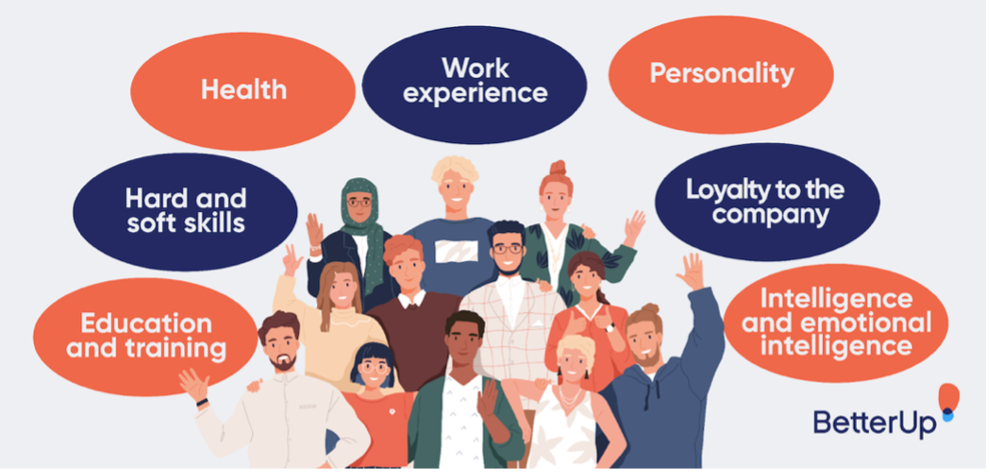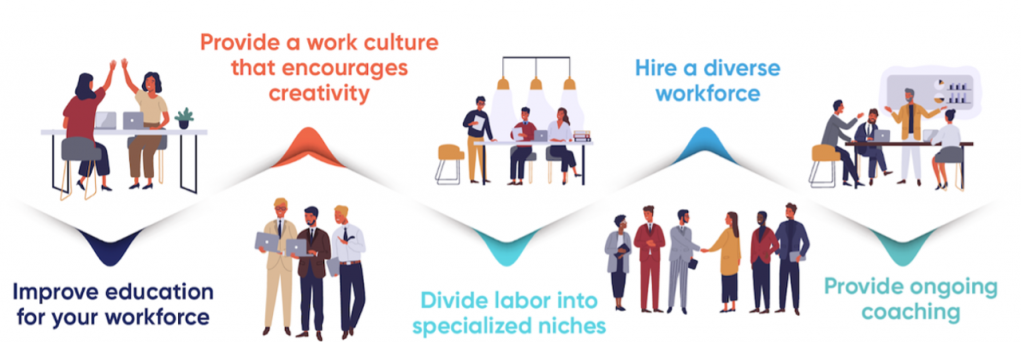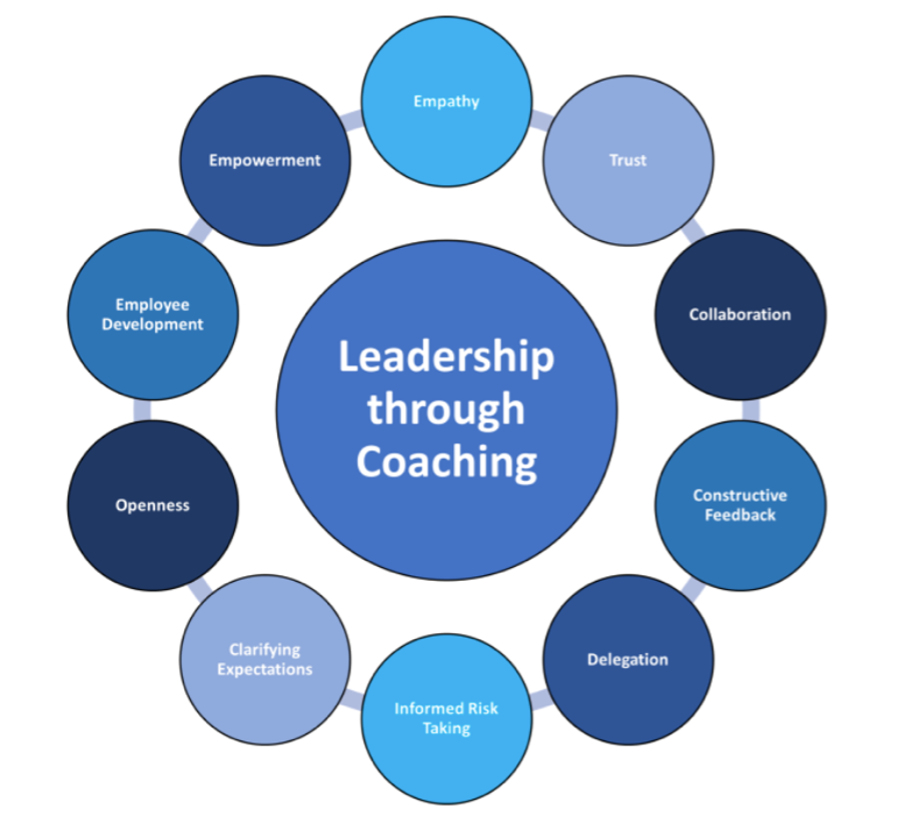Introduction
Amidst the turbulence of contemporary challenges, from rapid technological developments to shifting global dynamics, the cultivation of human capital emerges as both a strategic and a moral imperative. As countries around the globe strive to navigate these intricacies, the synergy between enlightened policy interventions and coaching leadership (CL) practices becomes ever more indispensable.
In the era of rapid changes and uncertainty, where globalisation, technological refinement, and socio-economic disruptions are reshaping the landscape of work and society, the imperative of human capital development (HCD) has never been more prominent. Against this backdrop, this article emerges as a gateway to a thorough exploration, delving deep into the relationship between HCD frameworks and CL strategies. Indeed, examining how these elements intertwine and complement each other seeks to uncover pathways that address the immediate needs and lay the groundwork for sustained human capital development.
Thus, this examination offers insights that illuminate the way forward, guiding stakeholders towards informed decisions and impactful actions that propel individuals and societies towards greater resilience, innovation, and wellbeing. It also addresses the impact of current challenges in terms of policy and how NHRC/HRD Corp can contribute to shaping policies and initiatives that encourage HCD.
Empowerment in Small Businesses through HCD and CL
Small organisations often encounter a myriad of challenges that can significantly impact their development and sustainability, including limited financial resources, scalability issues, competition, lack of human capital management, economic shifts, technological advancements, Artificial Intelligence (AI), lack of appropriate leadership, navigating intricate regulatory requirements and adherence standards, as well as upholding a cohesive team and effective leadership which can pose significant hurdles, as small organisations strive to balance operational demands with employee development and engagement.
The concept of human capital is profoundly rooted in economic thought and has been recognised for over two centuries. In his seminal work, “The Wealth of Nations,” published in 1776, Adam Smith highlighted the importance of human skills and knowledge in creating wealth for individuals and nations alike. Smith’s insights laid the foundation for understanding human capital as a crucial factor in economic expansion.
Therefore, the recognition of human capital as a vital element of economic success has persisted throughout history, shaping policy agendas and guiding strategies for sustainable evolution. In other words, human capital emerges as a crucial factor in influencing organisational performance, especially when investing in knowledge and skills rather than solely focusing on educational qualifications (Kuswanto, 2024).

Indeed, the absence of effective leadership often hinders the performance of SMEs, resulting in their inability to contribute meaningfully to the national Gross Domestic Product (GDP). According to the OECD 2022 report, SMEs serve as the cornerstone of the Malaysian economy, comprising 97.2% of total business establishments and contributing 38.2% to the GDP. Accordingly, to ensure organisational prosperity and economic growth, these companies must foster a culture of leadership that emphasises employee well-being and development. In light of this, small companies can nurture talent and cultivate a loyal workforce by investing in competitive salaries and implementing coaching leadership in order to enhance employee satisfaction and retention, resulting in long-term stability and success for the organisation, eventually leading to a positive impact on the nation’s economy.
The Relationship between CL and HCD
In general, CL entails the supervisory practice of recognising and harnessing an employee’s potential, fostering their skills, and facilitating their learning journey (Mäkelä et al., 2024) with the primary objective of enhancing the performance of both the individual subordinate and the organisation as a whole (Yuan et al., 2019; Tanskanen et al., 2018; Bond & Seneque, 2013; Ellinger et al., 2008). Furthermore, CL embodies a human-centric approach, appreciating and honouring a team’s diverse talents and abilities (Smetana, 2024).
Additionally, a leader is not seen as an all-powerful figure who dictates commands but as a facilitator who offers guidance, fosters growth, and encourages self-directed learning (Smetana, 2024). In fact, CL plays a crucial role in advancing human capital within organisations through providing tailored mentorship, constructive feedback, and unwavering support in an effort to enhance competencies, knowledge, and skills. Therefore, the strategic investment in HCD through CL enables companies to foster a culture of continual learning, innovation, and superior performance, eventually driving sustainable growth and prosperity.
Challenges Associated with HCD and CL
The significance of human capital development has risen significantly in both developed and developing countries, given the essential role of acquiring knowledge, skills, and abilities in fostering economic growth and advancement (Entekhabi, 2023). Nevertheless, numerous shared obstacles impede the capacity of developing nations to prioritise investments in human capital, including low levels of literacy and education, inadequate healthcare provisions, lack of support and guidance, high rates of unemployment and underemployment, gender disparities, and limited allocation of resources to skill enhancement initiatives (Entekhabi, 2023).
Yun-Han (2023) reports that Malaysia confronts a dual challenge, namely the rapid ageing of its population and the imperative for dynamic human capital development. Malaysia’s ageing demographic is projected to surge, with over 15% expected to be above 65 by 2050 (The Star, 2023). Allocating resources to retrain and upskill vulnerable groups like the elderly and individuals with disabilities can facilitate their integration into the workforce; thus, the national upskilling initiatives, exemplified by the Madani Training Programme spearheaded by the HRD Corp can incentivise businesses to tap into this untapped talent reservoir (Yun-Han, 2023).
Likewise, drawing insights from global best practices, Malaysia can also introduce incentives for hiring and retaining older workers, offer training subsidies, and adapt workplace infrastructure to accommodate diverse needs. While investing in upskilling is vital for HCD, the emphasis must also be placed on cultivating in-demand skills that translate into higher-paying employment opportunities (The Star, 2023). The impending launch of the National Technical and Vocational Education and Training (TVET) Policy in June 2024 will streamline TVET education coordination among 12 ministries and 1,344 TVET institutions nationwide.
As depicted in Figure 2.0, ongoing coaching stands out as one of the key strategies for enhancing HCD. In light of this, CL is pivotal in fostering HCD within organisations, as it emphasises mentorship, guidance, and personalised support to empower individuals to reach their full potential.

A Successful Case of CL Implementation in a Small Company
A successful example of CL implementation is a small and professional firm categorised as an SME in Kelantan, Malaysia, founded in October 1990, duly registered with the Land Surveyors Board of Malaysia and the Ministry of Finance under “Kod Bidang 33023”. Despite initially starting with a staff of five (5), the workforce expanded significantly over time. While based in Kota Bharu, Kelantan, the company’s operational scope spans the nation, with survey teams mobilised from Kota Bharu, and indeed, the clientele stands as the most valuable asset as well.
Over the span of three decades, the company has thrived by implementing CL in conjunction with various other leadership styles. This approach has been instrumental in fostering a culture of continuous growth and development within the organisation. In fact, it has played a pivotal role in empowering employees to reach their full potential by providing guidance, support, and constructive feedback. At the same time, the company’s owner, who also serves as the coaching leader, has cultivated a collaborative environment where team members are encouraged to take ownership of their work and actively contribute to the company’s success.
The company’s innovative strategy of empowering employees to pursue entrepreneurship and subsequently rejoin as partners played a pivotal role in its exceptional talent retention. This distinctive approach not only cultivated a deep sense of loyalty but also resulted in an impressively low turnover rate spanning three decades. Through dedicated support and encouragement of employees’ career development and ambitions, the company forged a symbiotic relationship wherein individuals thrived both within and outside its confines. Therefore, this nurturing environment, along with CL, fortified the workforce, ensuring sustained success and growth for the organisation in the long run.
Accordingly, over the past three decades, the company owner successfully navigated challenges using CL by fostering a culture of empowerment, continuous learning, and collaboration. Through coaching, the owner provided guidance and support to employees, enabling them to overcome obstacles, develop their skills, and take ownership of their roles. Likewise, the owner fostered a sense of belonging and commitment among the team by encouraging open communication and valuing employee input. In addition, the owner leveraged CL to promote innovation and adaptability, encouraging employees to think creatively and embrace change. Therefore, CL has significantly enhanced the business opportunities and reputation of the company; despite its location in a small city, implementing CL principles has enabled the company to cultivate a culture of excellence, innovation, and teamwork, boosting it to excel in its industry.
Unveiling CL and Strategies for Dynamics in Malaysian Small Companies
In the Malaysian context, CL emerges as a potent tool for unleashing human potential and driving organisational success amidst unique socio-cultural and economic dynamics. Malaysia stands as a nation distinguished by its rich diversity, encompassing various ethnicities, cultures, and languages. At the same time, the country’s economy is marked by rapid industrialization and technological development, leading to a constantly evolving corporate landscape. As Malaysia navigates the complexities of a diverse workforce and rapidly evolving industries, unveiling the transformative potential of CL becomes imperative (Latsoomanan, 2023).
Undoubtedly, demonstrating the enactment of CL empowers small businesses to cultivate a culture of continual expansion and flexibility, facilitating adept navigation of dynamic business environments. Consequently, Malaysian small enterprises can leverage CL to propel lasting achievements and uphold competitiveness within their sectors by deploying customised strategic endeavours addressing specific challenges and opportunities such as talent cultivation, innovation, market diversification and HCD.
CL is specifically relevant in the Malaysian context due to the nation’s strong emphasis on lifelong learning and skills development. Henceforth, with the government’s initiatives to stimulate upskilling and reskilling, CL complements these efforts by providing individuals with the personalised guidance and support required to navigate their career paths and adapt to changing industry demands. In light of this, HRD Corp holds a pivotal role in addressing HCD challenges through CL by offering tailored solutions and resources as outlined below.
- Establish CL training initiatives tailored to Malaysian organisations’ needs and context, equipping leaders with skills to mentor and develop team members.
- Act as a knowledge hub by conducting research and gathering best practices on CL approaches effective in the Malaysian context and disseminate findings through workshops, seminars, and online resources.
- Facilitate collaboration and networking among leaders and practitioners through CL, fostering a culture of continuous improvement and learning, driving HCD and organisational success in Malaysia.
Hence, the role of CL amidst the contemporary challenges of HCD is pivotal in navigating the intricacies of today’s workforce landscape. As organisations, including small businesses, grapple with rapid technological improvements, shifting demographics, and evolving market dynamics, CL emerges as a strategic approach to foster development, resilience, and innovation (Homes, 2023; Vucicevic, 2023).
In this context, Figure 3.0 presents the core characteristics of CL, enabling coaching leaders to create an environment conducive to employee development and engagement, promote HCD, and foster a culture of excellence within the organization.

A Way Forward for Reflecting on CL and HCD
A way forward for contemplating CL and HCD entails a holistic approach that acknowledges the symbiotic relationship between leadership evolution and the cultivation of human capital within enterprises. Indeed, small organisations must recognise the integral role of CL in unlocking their workforce’s potential and driving organisational success.
Moreover, HCD should be prioritised as a strategic imperative for long-term sustainability and growth, which involves establishing an environment that nurtures talent, fosters diversity and inclusion, and facilitates lifelong learning and development. Additionally, offering opportunities for skills enhancement, career advancement, and personal growth enables organisations to attract and retain top talent, drive innovation, and uphold a competitive edge in the market. Eventually, by embracing CL and prioritising HCD, small organisations can create a thriving workplace culture where individuals are empowered to excel, organisations thrive, and society benefits. Consequently, CL fosters an environment where individuals can confront reality while effectively communicating and navigating through persuasive rhetoric, enabling them to make informed decisions and drive meaningful changes.
Therefore, CL is crucial for organisational success, especially when integrated with other leadership styles such as transformational, ethical, and entrepreneurial. Notably, leaders who adopt a coaching approach not only guide their subordinates toward achieving organisational goals but also cultivate an environment of ongoing learning and development, which is vital for HCD. Indeed, the impact of coaching leadership is particularly significant in small industries.
For instance, Wira Ukur Consultant Sdn Bhd (WUC), a professional firm in Kelantan, Malaysia, demonstrates how this leadership style can be effectively implemented. In such firms, leaders who coach their team members can cultivate a culture of support and development, leading to improved employee performance, satisfaction, and retention. In light of this, the application of CL can lead to several benefits, such as increased employee engagement, improved performance and the development of a supportive environment that inspires employees to think creatively. Consequently, CL is integral to HCD, as it ensures that organisations can benefit from a skilled, motivated, and innovative workforce, driving long-term success and sustainability.
- Bond, C., & Seneque, M. (2013). Conceptualizing coaching as an approach to management and organizational development. Journal of Management Development, 32(1), 57–72. Click HERE to access.
- Ellinger, A., Hamlin, R., & Beattie, R. (2008). Behavioural indicators of ineffective managerial coaching: A cross-national study. Journal of European Industrial Training, 32(4), 240–257. Click HERE to access.
- https://doi.org/10.1108/ 03090590810871360
- Entekhabi, M. (2023). Human Capital in Developing Countries: Common Challenges and the Path Forward. Journal of Emerging Trends in Marketing and Management, 1(2), 18–29. Click HERE to access.
- Homes, G. (2023). The Leader as a Coach – Nurturing Excellence in the Workplace. LinkedIn: Click HERE to access.
- Kuswanto, A. (2024). Insurance Human Capital Development: Literature Review. East African Scholars Journal of Economics, Business and Management, 7(03), 72–85. Click HERE to access.
- Latsoomanan, G. (2023). Importance of Coaching for Malaysia in 2023. LinkedIn: Click HERE to access.
- Mäkelä, L., Kangas, H., Korkiakangas, E., & Laitinen, J. (2024). Coaching leadership as a link between individual- and team-level strength use at work. Cogent Business & Management; Taylor & Francis. Click HERE to access.
- (2022). OECD ILibrary ; Key facts on SME financing. Click HERE to access.
- Smetana, E. (2024). How a Coaching Leadership Style Unleashes Human Potential at Work. TalentCulture. Click HERE to access.
- Smith, A. (1776), The Wealth of Nations, Book 2 (London: G: Routledge).
- Tanskanen, J., Mäkelä, L., & Viitala, R. (2018). Linking managerial coaching and leader–member exchange on work engagement and performance. Journal of Happiness Studies, 20(4), 1217–1240. Click HERE to access.
- Vucicevic, M. (2023). Coaching Leadership: Definition, Pros & Cons, and Famous Examples. Pumble: Click HERE to access.
- Yuan, C., Wang, Y., Huang, W., & Zhu, Y. (2019). Can coaching leadership encourage subordinates to speak up? Dual perspective of cognition-affection. Leadership & Organization Development Journal, 40(4), 485–498. https://doi.org/10.1108/LODJ-01-2018-0009
- Yun-Han, L. (2023). Human capital: Balancing development and closing gaps. The Star: Click HERE to access.



